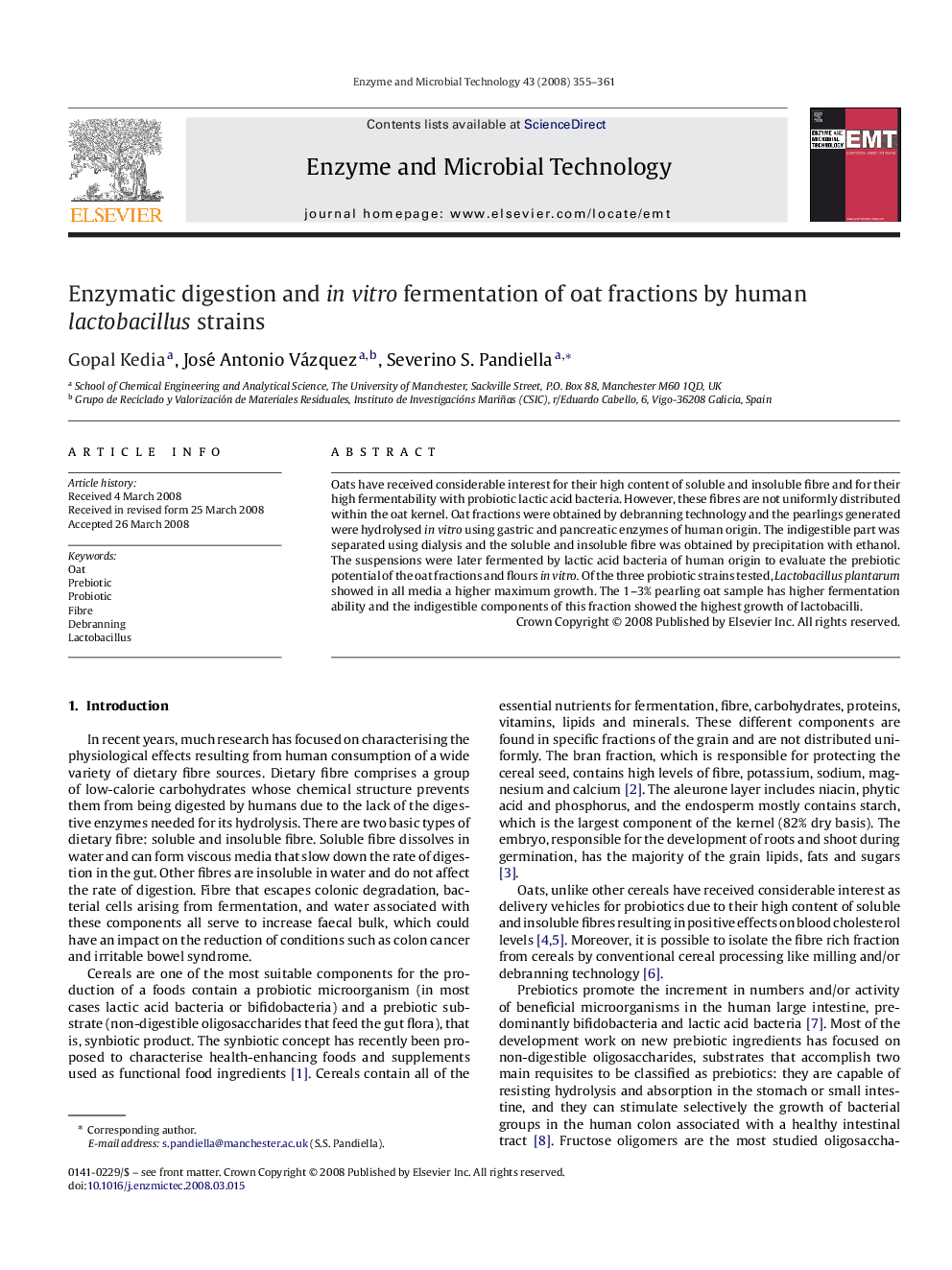| Article ID | Journal | Published Year | Pages | File Type |
|---|---|---|---|---|
| 17831 | Enzyme and Microbial Technology | 2008 | 7 Pages |
Oats have received considerable interest for their high content of soluble and insoluble fibre and for their high fermentability with probiotic lactic acid bacteria. However, these fibres are not uniformly distributed within the oat kernel. Oat fractions were obtained by debranning technology and the pearlings generated were hydrolysed in vitro using gastric and pancreatic enzymes of human origin. The indigestible part was separated using dialysis and the soluble and insoluble fibre was obtained by precipitation with ethanol. The suspensions were later fermented by lactic acid bacteria of human origin to evaluate the prebiotic potential of the oat fractions and flours in vitro. Of the three probiotic strains tested, Lactobacillus plantarum showed in all media a higher maximum growth. The 1–3% pearling oat sample has higher fermentation ability and the indigestible components of this fraction showed the highest growth of lactobacilli.
